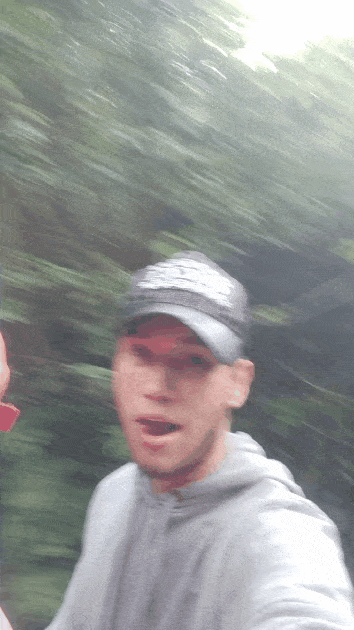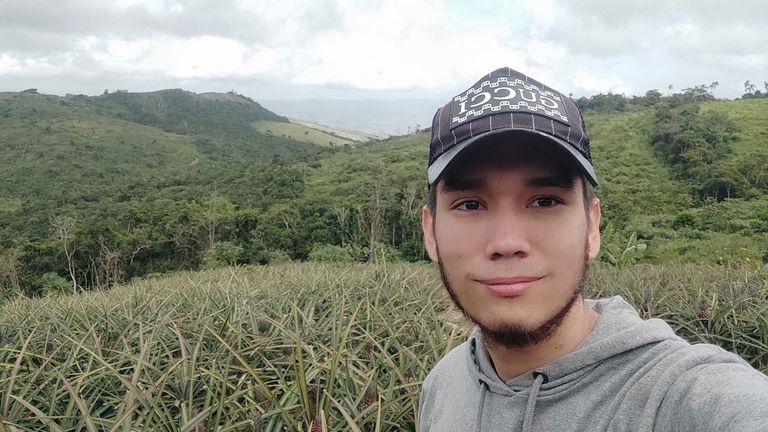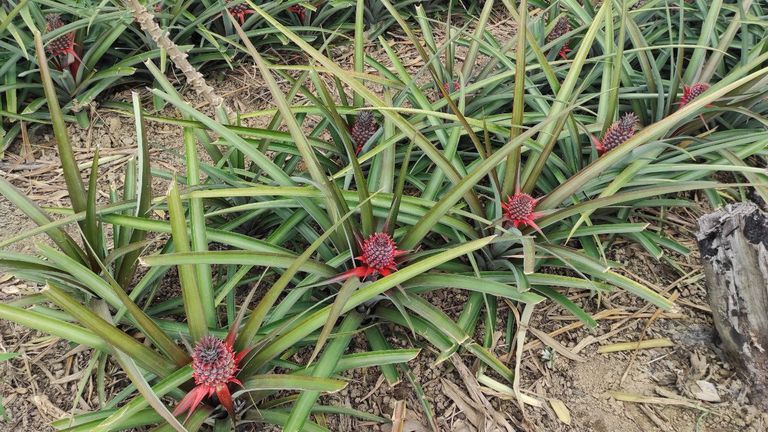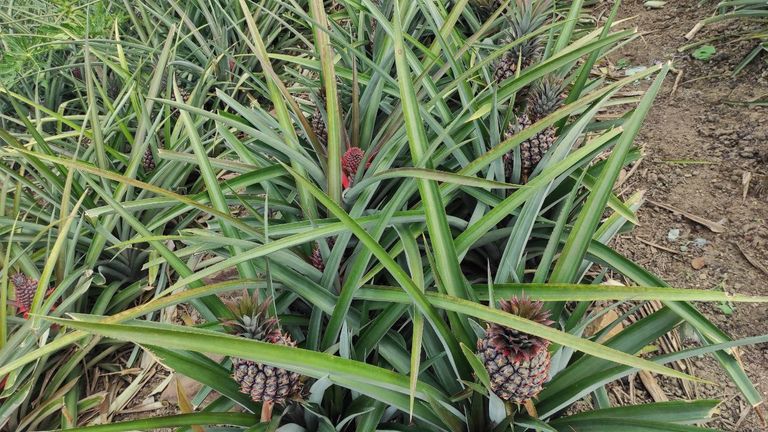Zinc lagoon - Mount Saroche. // Laguna del cinc - Cerro Saroche.
Pinmable link: [//]:# (!pinmapple 10.38377 lat -69.48497 long Exploring the mountains of Cerro Saroche National Park. d3scr)

Versión en español
Hola amigos viajeros, mochileros y excursionistas, hoy quiero mostrarles y contarles como fue mi visita a lo mas profundo de las montañas del Parque Nacional Cerro Saroche, un parque muy importante de mi region ubicado en una zona del semi-árido. Este parque se caracteriza por poseer una flora y fauna única, ya que es el hogar de varios de los felinos como el Cunaguaro, La onza (Yaguarundí), y el gato montes, además de eso de muchas aves de importancia nacional, como lo son el Cardenalito, emblema de muchos equipos de deportes de mi ciudad, y como es el Turpial que es el ave nacional, de igual manera otras especies como el oso hormiguero, guacharaca, paloma turca entre otras.
Aunque el parque nacional es muy grande y comprende aproximadamente 350km2, fui a una de las montañas dentro de estas limitaciones muy cercana a un pueblito llamado el Caimito, lugar donde me quede 2 noches para poder ir a este sitio, aquí tengo algunos familiares que viven en este pueblo y trabajan en estas montañas. Aunque vi algunos de los animales que mencione arriba, me fue imposible fotografiarlos sin que se fueran antes de sacar el teléfono, sin embargo tengo contenido sobre el paseo y algo un poco perturbador sobre los arboles de la montaña.
English version
Hello fellow travelers, backpackers and hikers, today I want to show you and tell you how was my visit deep into the mountains of Cerro Saroche National Park, a very important park in my region located in a semi-arid zone. This park is characterized by its unique flora and fauna, as it is home to several felines such as the Cunaguaro, the Yaguarundi, and the gato montes, as well as many birds of national importance, such as the Cardenalito, emblem of many sports teams in my city, and the Turpial which is the national bird, as well as other species such as the anteater, guacharaca, turkey dove, among others.
Although the national park is very large and comprises approximately 350km2, I went to one of the mountains within these limitations very close to a small town called Caimito, where I stayed 2 nights to go to this site, here I have some relatives who live in this town and work in these mountains. Although I saw some of the animals I mentioned above, it was impossible for me to photograph them without them leaving before I took out my phone, however I have content about the walk and something a little disturbing about the trees on the mountain.
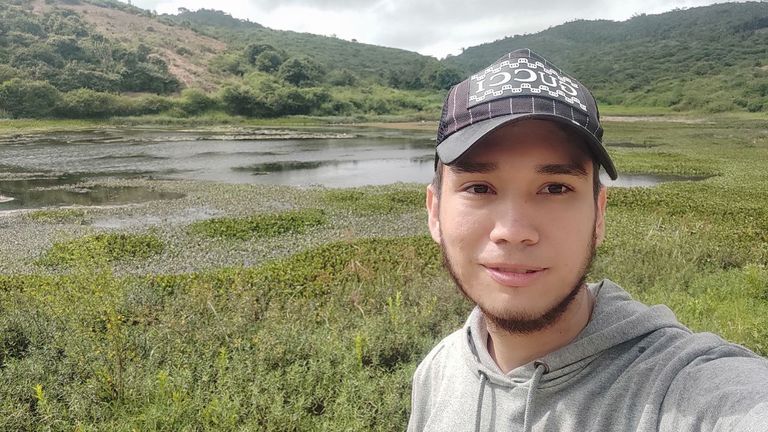
Decidí que mi primo manejara para poder tomar fotografías de la carretera y el camino, el cual es un camino muy estrecho por donde solo las motocicletas pueden pasar, hay lugares que están completamente tapados por abundante maleza y plantas, además que esta un poco mojado por las fuertes lluvias que azotaron la zona hace 1 semana atrás, hay lugares donde hay arena y solo un buen chofer puede pasar aquí sin caerse.
El tiempo para llegar a la entrada de la montaña es de 15min aproximadamente, y luego comenzamos a subir por el bosque, aunque hay diferentes entradas hay que saber cual es la carretera principal, ya que algunas solo llevan a cultivos de piñas y no hay salida.
I decided to let my cousin drive so I could take pictures of the road and the road, which is a very narrow road where only motorcycles can pass, there are places that are completely covered by abundant weeds and plants, plus it is a little wet from the heavy rains that hit the area a week ago, there are places where there is sand and only a good driver can pass here without falling.
The time to get to the entrance of the mountain is approximately 15 minutes, and then we start to climb through the forest, although there are different entrances you have to know which is the main road, as some only lead to pineapple crops and there is no exit.
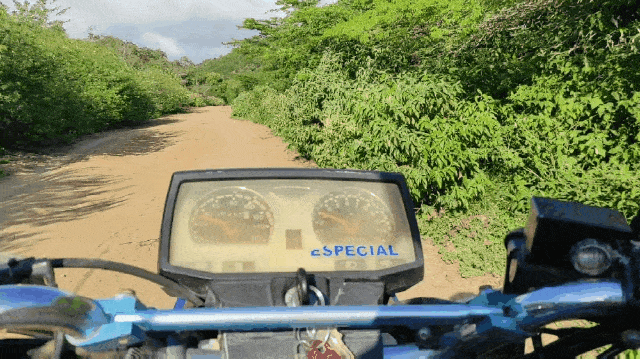
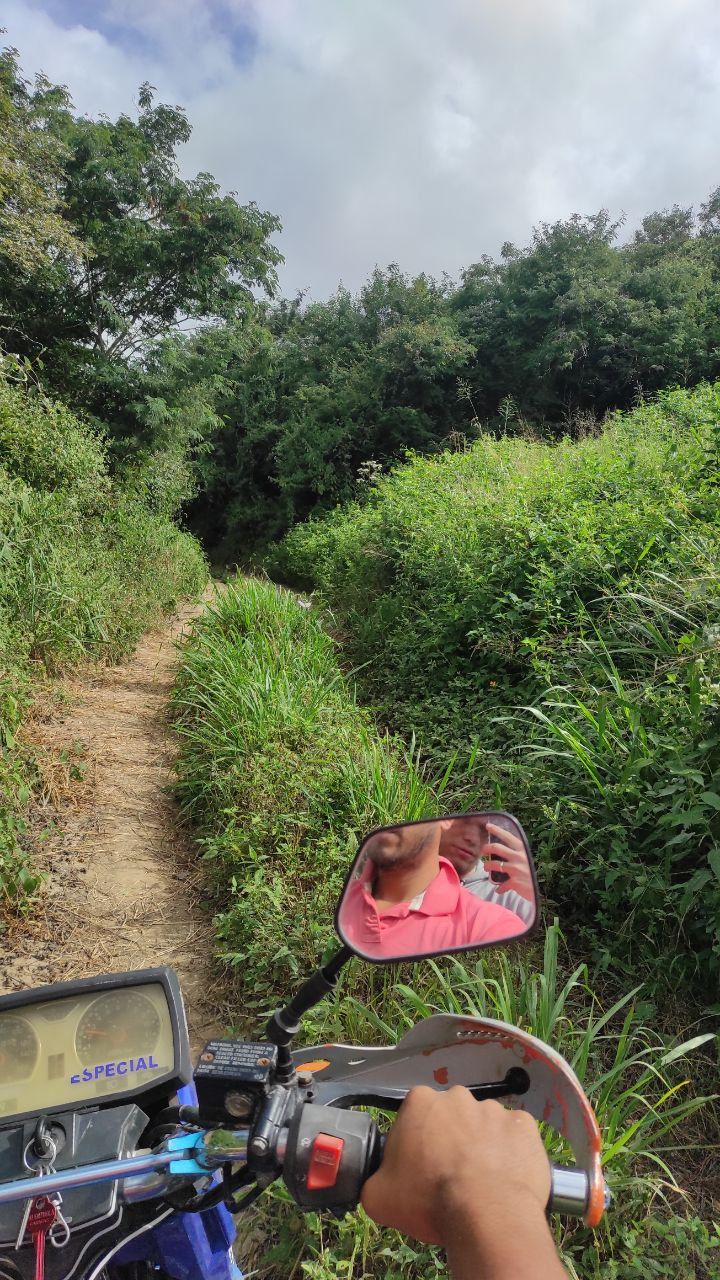
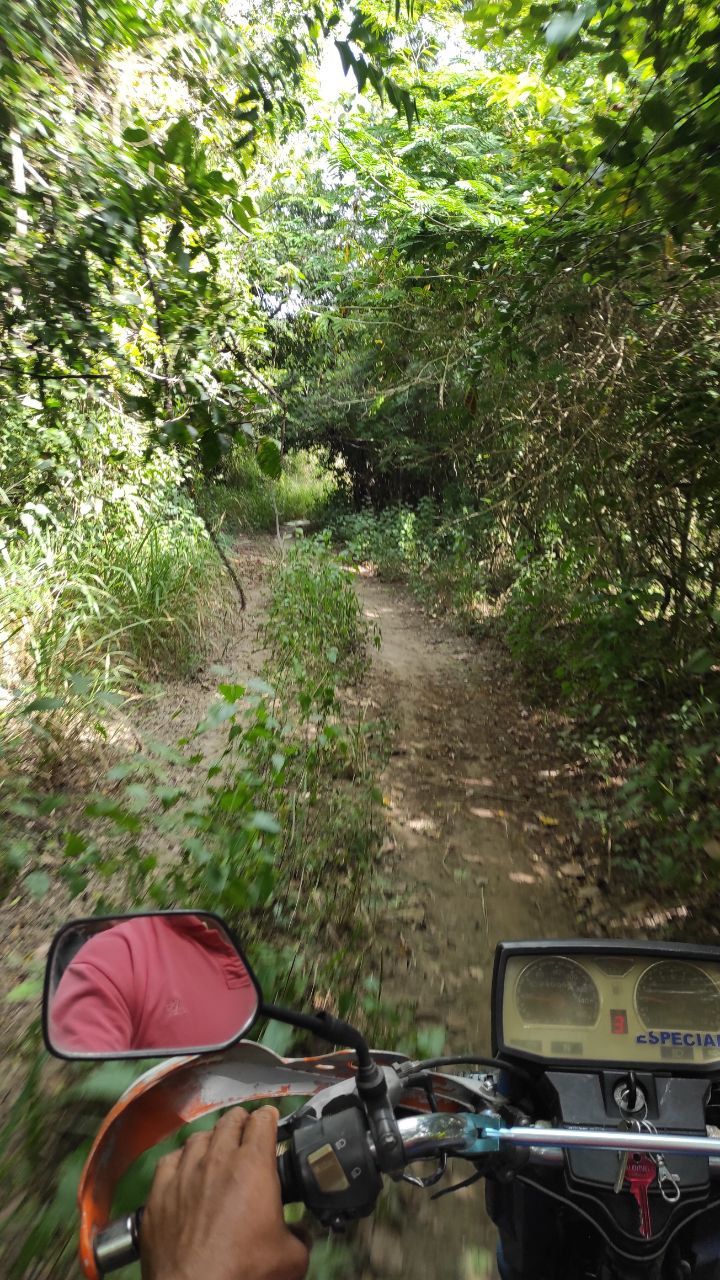
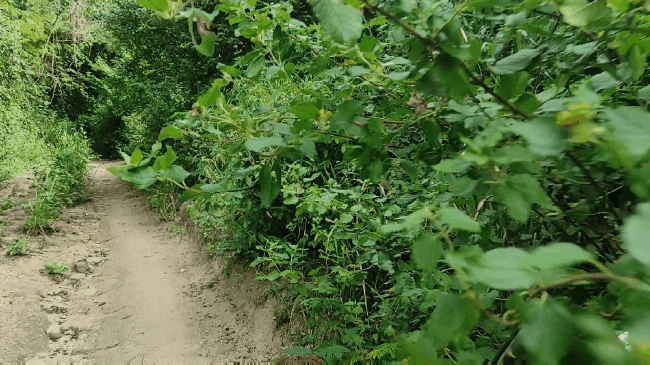
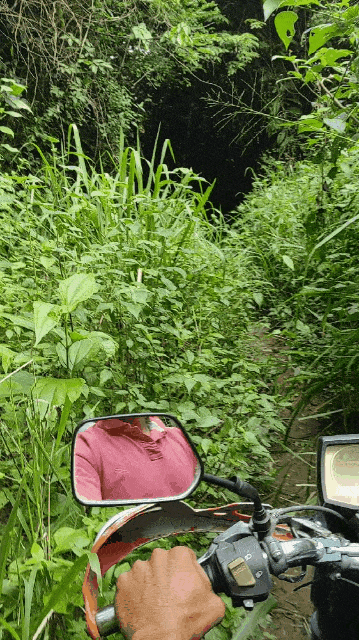
Al comenzar a llegar a lo mas profundo de la montaña podemos ver ganado de los pobladores, el cual dejan aquí sueltos para que puedan vivir tranquilos, están cerca a las lagunas de agua y en lugares donde hay abundante pasto, usualmente están a la orilla de la carretera, pero hay mas ejemplares que no pudimos ver ya que estaban dentro de la montaña. El ganado suele ser visto cada cierto tiempo y cuando las vacas están esperando crías, las separan para que tenerlas mas cuidadas hasta que las crías crezcan, ya que aquí hay felinos que suelen alimentarse de las vacas, chivos y otros animales en esta zona, el mas conocido es el león de montaña (no es el puma, es otro felino del cual no conozco el nombre científico).
De igual manera caballos que están amarrados mientras comen pasto, son de los pobladores los cuales acceden a este lugar en ellos o en motocicleta.
As we begin to reach the deepest part of the mountain we can see the cattle of the villagers, which are left here loose so they can live in peace, they are near the water lagoons and in places where there is abundant grass, they are usually on the side of the road, but there are more specimens that we could not see because they were inside the mountain. The cattle are usually seen from time to time and when the cows are expecting calves, they separate them so that they can be better cared for until the calves grow up, since there are felines that usually feed on the cows, goats and other animals in this area, the best known is the mountain lion (it is not the puma, it is another feline whose scientific name I do not know).
There are also horses that are tied up while eating grass, they belong to the locals who access this place in them or on motorcycles.
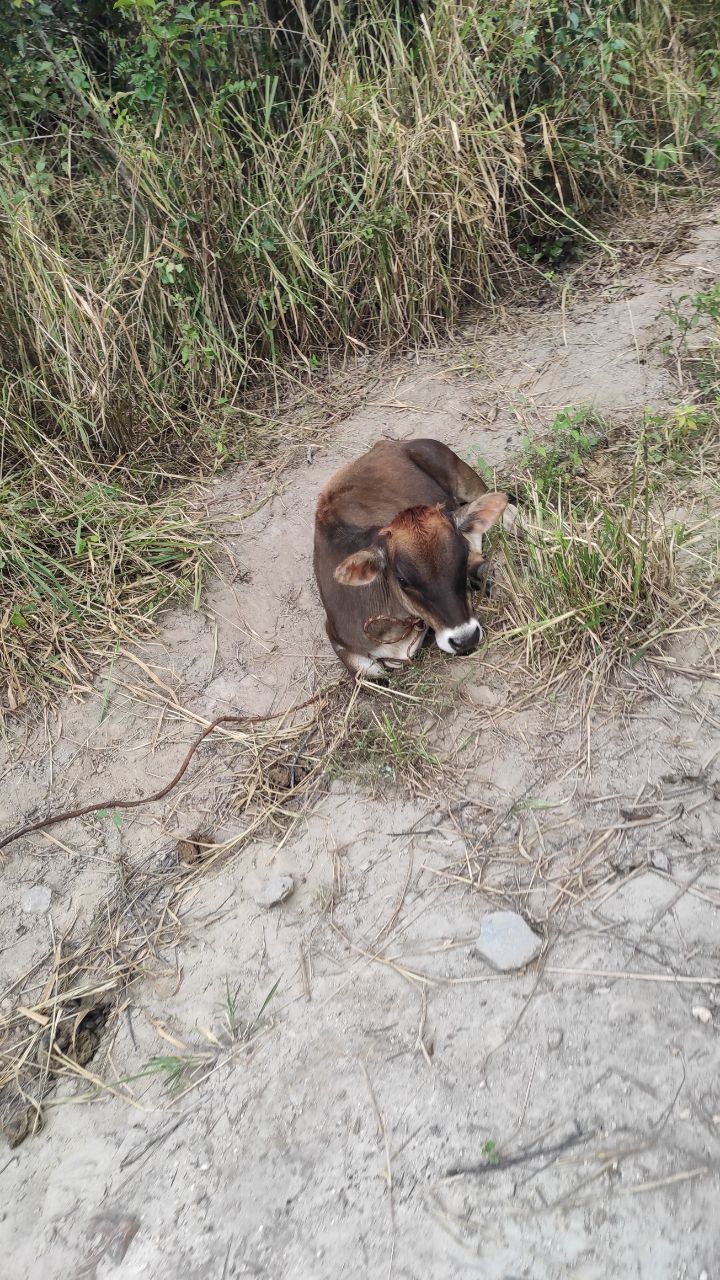
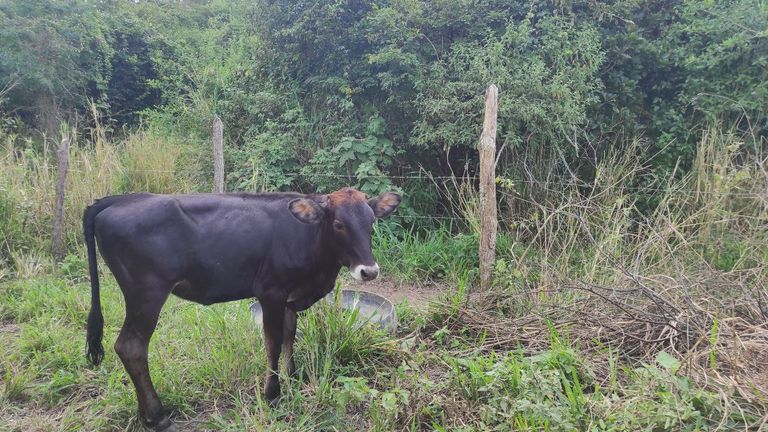
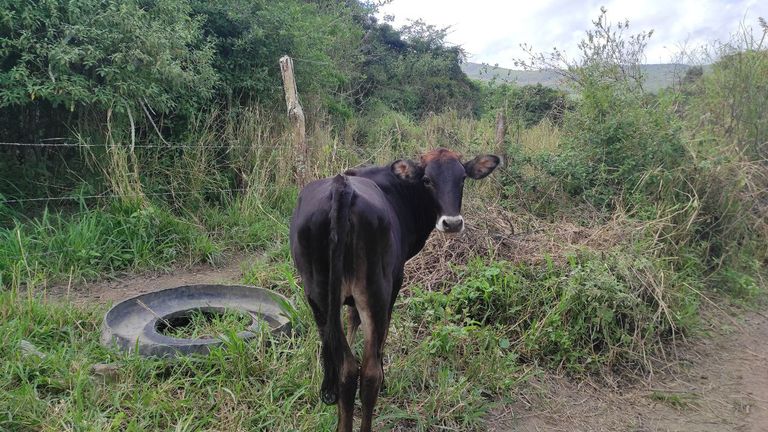
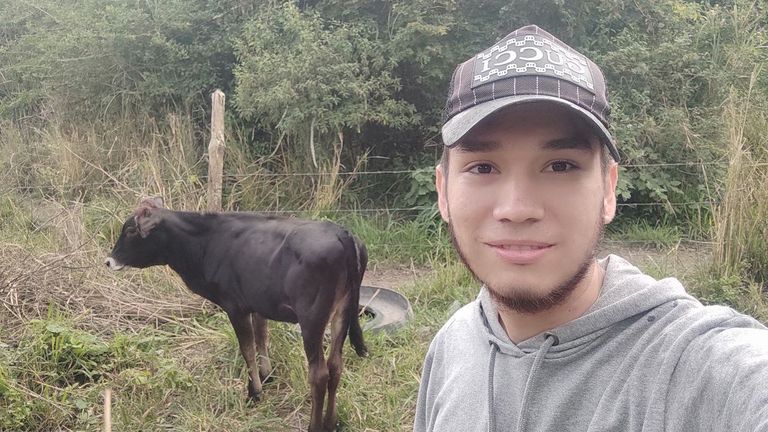
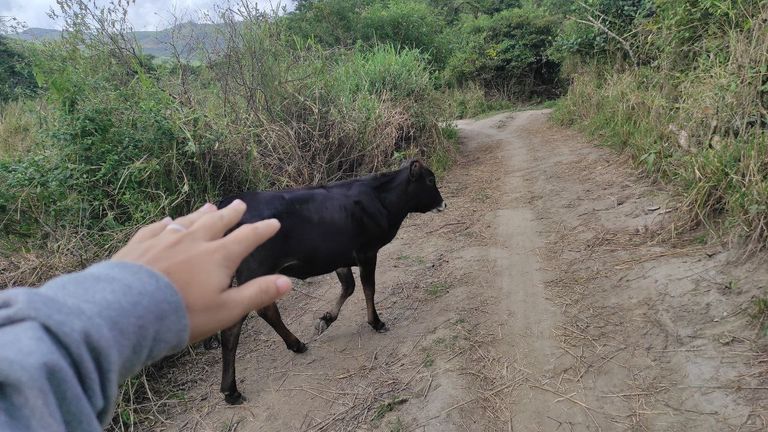
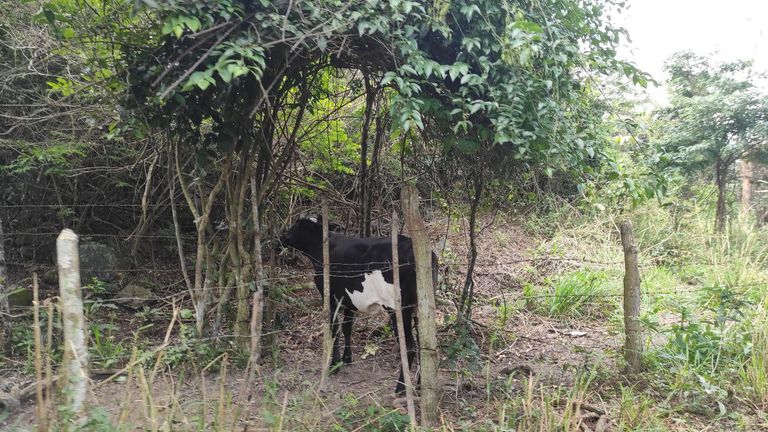
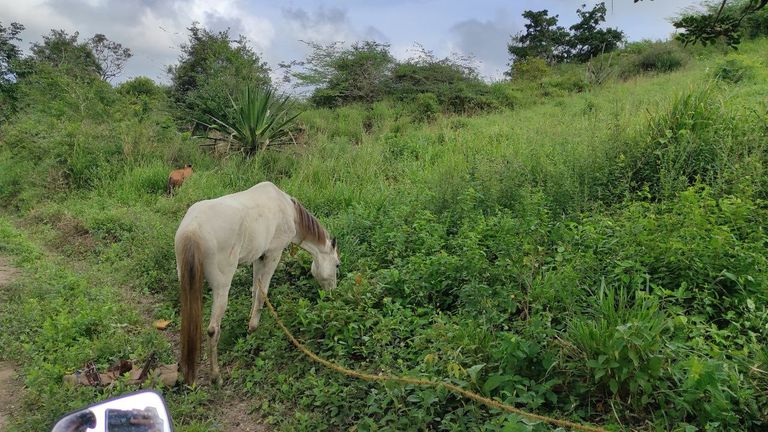
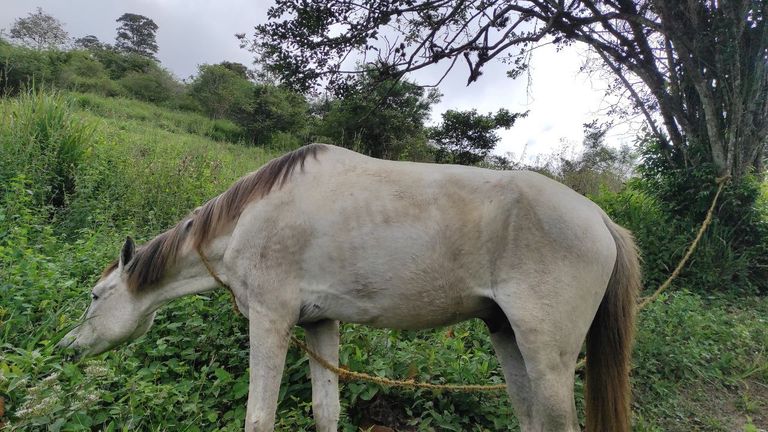

En este punto es normal ver algunos cultivos de piña a la orilla de la carretera en plena montaña, aunque mucho mas atrás también habían estos cultivos, sin embargo no estaban a la orilla de la carretera. También un poco de cultivos de ají, plantas de plátano, caña de azúcar, papaya y otras que fueron cultivadas aquí.
Por otro hay otros arboles de guayaba de montaña, un pequeño fruto dulce similar a la guayaba, y arboles de guama o guaba.
At this point it is normal to see some pineapple crops on the side of the road in the middle of the mountain, although much further back there were also these crops, however they were not on the side of the road. There are also some chili bell pepper crops, banana plants, sugar cane, papaya and others that were cultivated here.
On the other side there are other trees of mountain guava, a small sweet fruit similar to the guava, and guama or guaba trees.
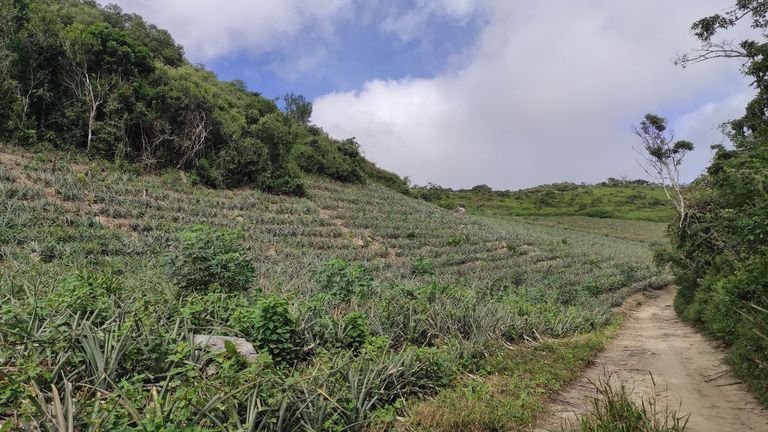
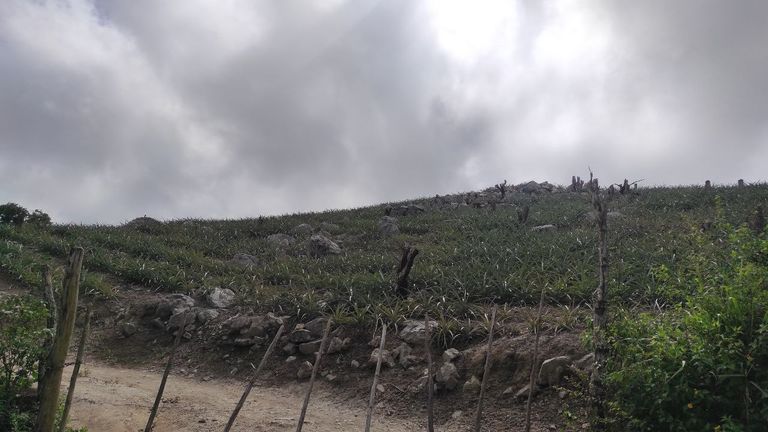



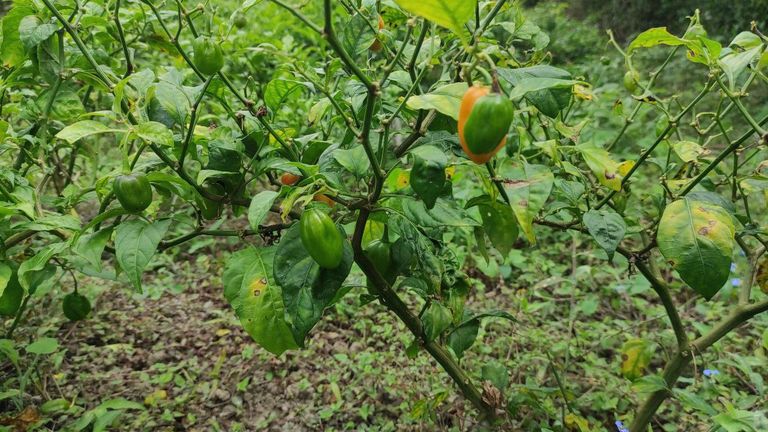
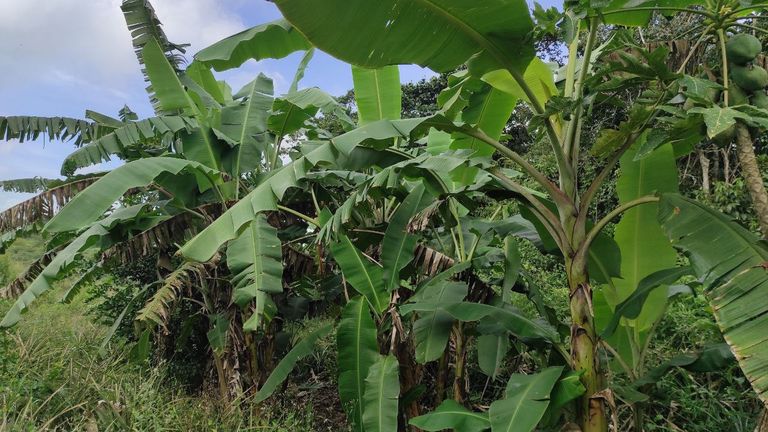
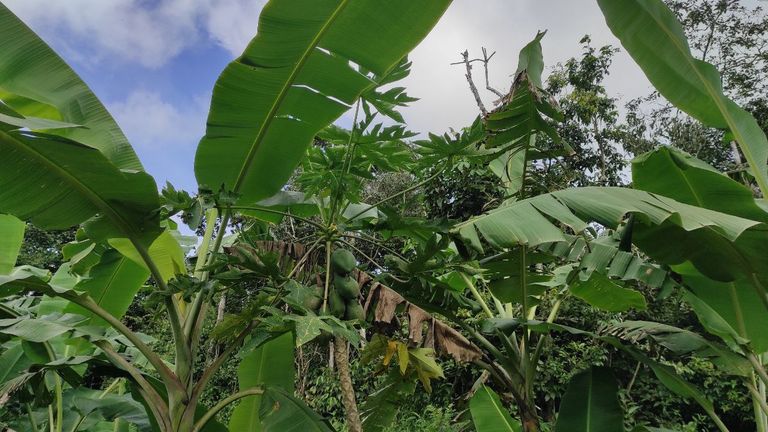

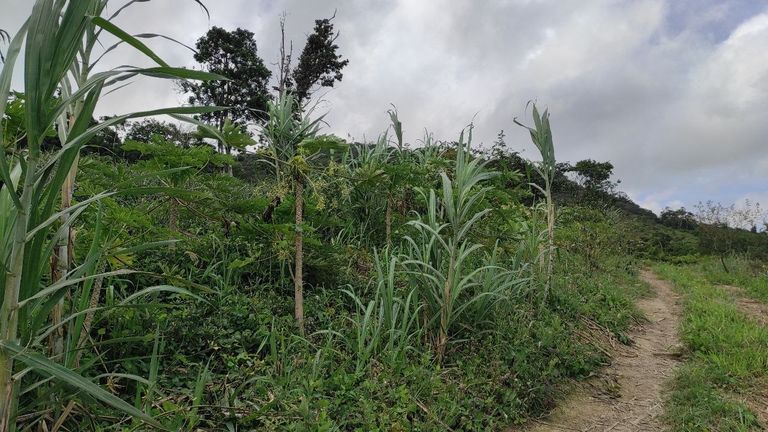
Lo mas bonito es pasar debajo de los arboles que tienen mas de 10-15 y 20mt de alto, el ambiente es muy fresco y húmedo para ser una montaña en el semi-árido, aquí la flora es abundante hay flores exóticas como la orquídea y flores silvestres las cuales desconozco. Además de lagunas repletas de plantas acuáticas, al parecer en estas lagunas hay muchos peces y escuche de mi primo que algunas personas trajeron un par de babos o caimán de anteojos que soltaron allí y estos se reprodujeron. Sin embargo en una gran época de sequia los babos no fueron vistos de nuevo, se presume murieron o fueron a otro lugar buscando agua.
Hay algo parecido a la estructura de una pequeña casa, supongo que alguien vivió aquí hace mucho tiempo, pero ahora esta deshabitada.
Una cosa que acotar es que aquí la carretera es literalmente un camino de un solo carril, los vehículos no pueden pasar por aquí, para llegar a este lugar deben dar la vuelta por otro sitio y el camino es de 30 min mas.
The most beautiful thing is to pass under the trees that are more than 10-15 and 20mt high, the environment is very cool and humid for a mountain in the semi-arid, here the flora is abundant there are exotic flowers such as orchids and wildflowers which I do not know. In addition to lagoons full of aquatic plants, apparently in these lagoons there are many fish and I heard from my cousin that some people brought a couple of baboons or spectacled caiman that were released there and they reproduced. However in a big dry spell the baboons were not seen again, presumably they died or went elsewhere looking for water.
There is something resembling the structure of a small house, I guess someone lived here a long time ago, but now it is uninhabited.
One thing to note is that the road here is literally a one lane road, vehicles can not pass through here, to get to this place they must turn around somewhere else and the road is 30 min more.
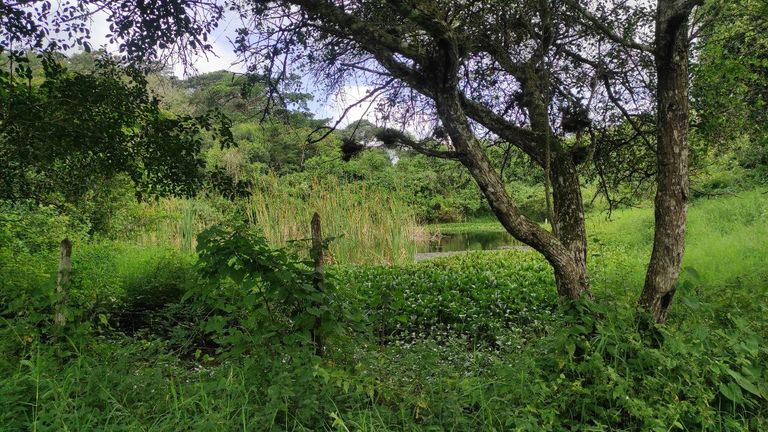
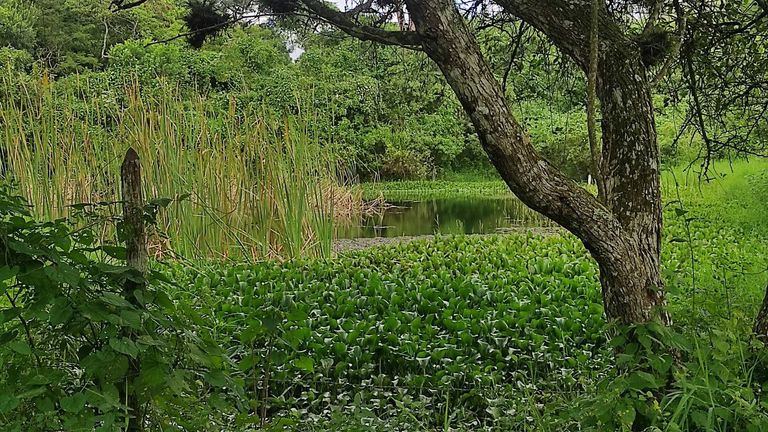

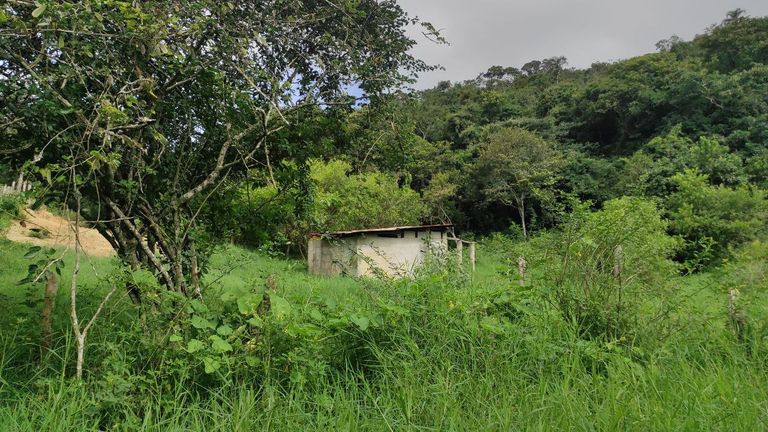

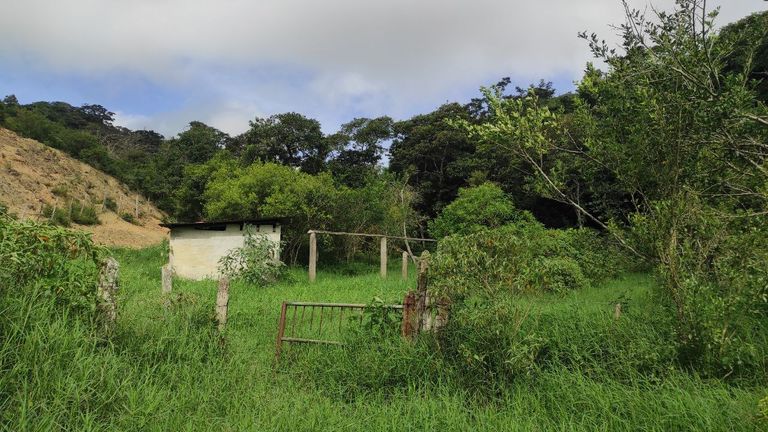
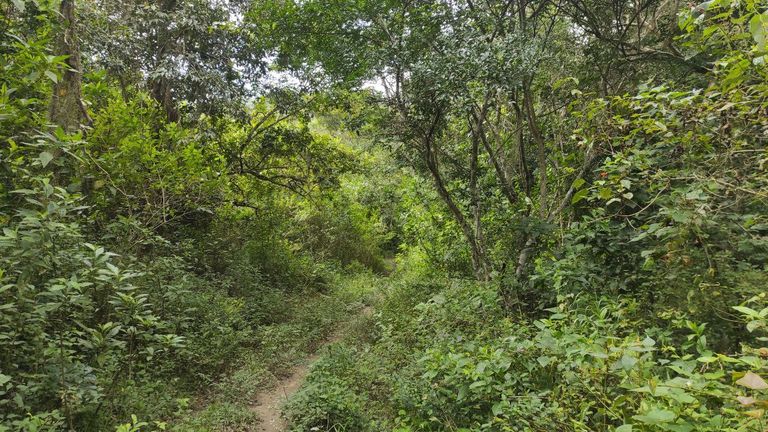


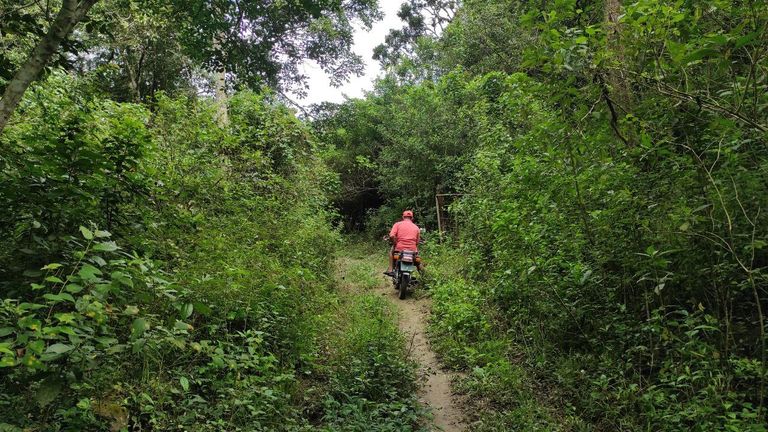
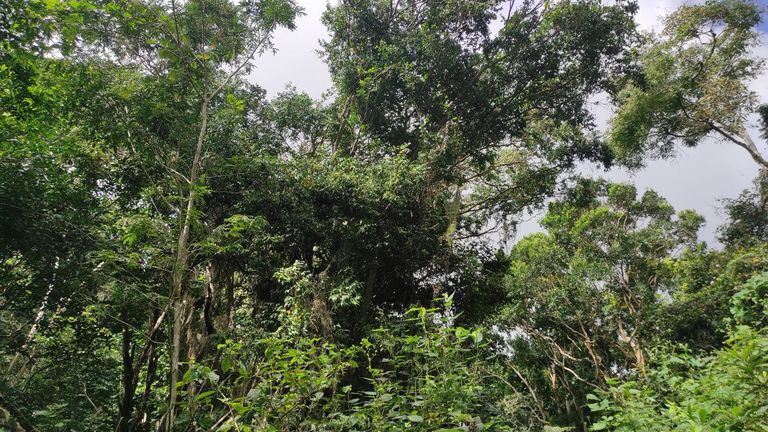
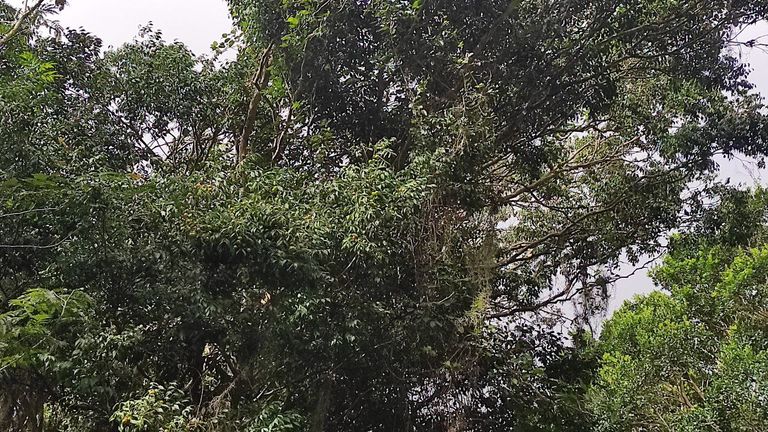
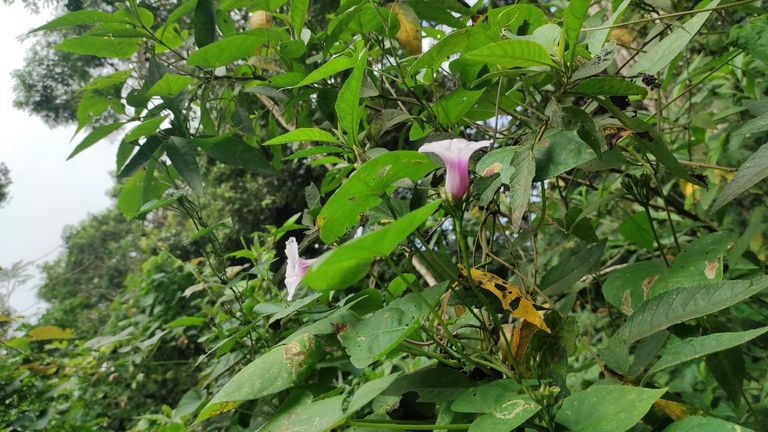
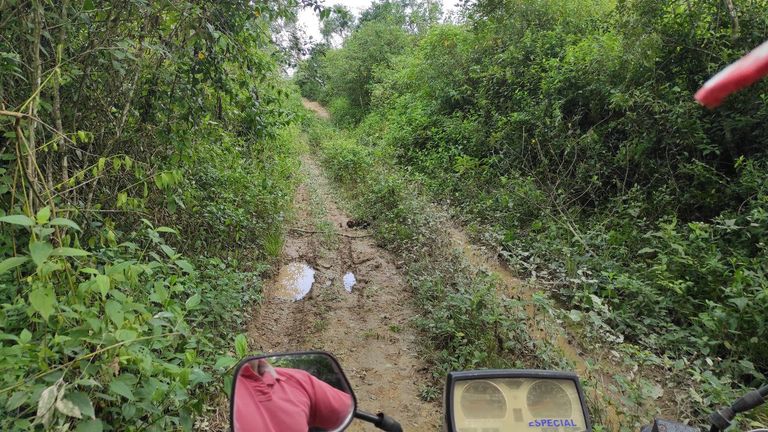
Y aquí comienza lo perturbador, algo que no podía creer y tuve que ir a verlo con mis propios ojos, y es que como vieron el lugar tiene arboles realmente grandes, arboles como el cují, vera, yabos y otros característicos de esta zona. Pues gran parte de esta montaña fue desaparecida por completo, mas 250 hectáreas fue cortada, quemada y borrada para la siembra de piña.
Aunque los pobladores de esta zona suelen hacer esto con pequeños pedazos de montaña, una persona en especifico que al parecer tiene mucho poder y dinero compro 250 hectáreas de esta zona para su cultivo comercial, se presume que tiene mucho mas ya que el cultivo se extiende por toda la montaña.
Algunos me dijeron que posee mas de 6 millones de plantas de piña, y una persona normal puede tener 100mil plantas.
El daño ecológico que haces al cortar arboles tan viejos es realmente grabe, mi papá me comento que cuando tenia mi edad y fue a este lugar se oían los monos araguatos cantando en la montaña, las guacharacas volando por la carretera y se topabas con mas de una serpiente algunas conocidas en la zona como "capitán de montaña (desconozco su nombre científico)", tigra cazadora (Spilotes pullatus), tragavenados (Boa constrictor), además de osos hormigueros rondando la zona, y cochinos de monte.
Yo pude ver a duras penas una sola serpiente tigra cazadora en la carretera, y algún puñado de guacharacas, no pude ver otro animal.
Imagino que al no tener lugar donde habitar estas especies migraron a otro sitio, ya que sus hogares fueron reducidos a cenizas.
Y aunque no se puede ver muy bien en las fotografías, el cultivo se entiende por todo la montaña, pero no fuimos las lejos ya que allí se encontraba el dueño de este lugar.
Mas adelante pude ver como también están comenzando a talar arboles y tumbar la montaña, incluso se puede ver el cambio en las fotografías. Y a lo lejos se ve el desastre natural donde estuve parado.
And here begins the disturbing, something that I could not believe and I had to go to see it with my own eyes, and as you saw the place has really big trees, trees like cují, vera, yabos and others characteristic of this area. A large part of this mountain was completely disappeared, more than 250 hectares were cut, burned and erased for the planting of pineapple.
Although the people of this area usually do this with small pieces of mountain, a specific person who apparently has a lot of power and money bought 250 hectares of this area for commercial cultivation, it is presumed that he has much more since the crop extends throughout the mountain.
Some people told me that he has more than 6 million pineapple plants, and a normal person can have 100,000 plants.
The ecological damage you do by cutting such old trees is really serious, my dad told me that when he was my age and went to this place you could hear the monkeys singing on the mountain, the guacharacas flying along the road and you would run into more than one snake some known in the area as "mountain captain (I do not know its scientific name)", hunting tigra (Spilotes pullatus), tragavenados (Boa constrictor), as well as anteaters roaming the area, and wild pigs.
I could hardly see a single hunting tigra snake on the road, and a handful of guacharacas, I could not see any other animal.
I imagine that having no place to live these species migrated elsewhere, since their homes were reduced to ashes.
And although you can not see very well in the photographs, the crop is understood throughout the mountain, but we did not go far as there was the owner of this place.
Further on I could see how they are also starting to cut down trees and fell the mountain, you can even see the change in the pictures. And in the distance you can see the natural disaster where I was standing.
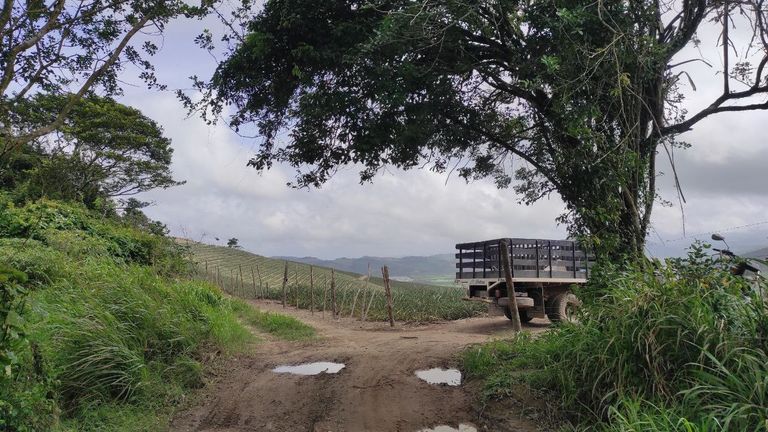
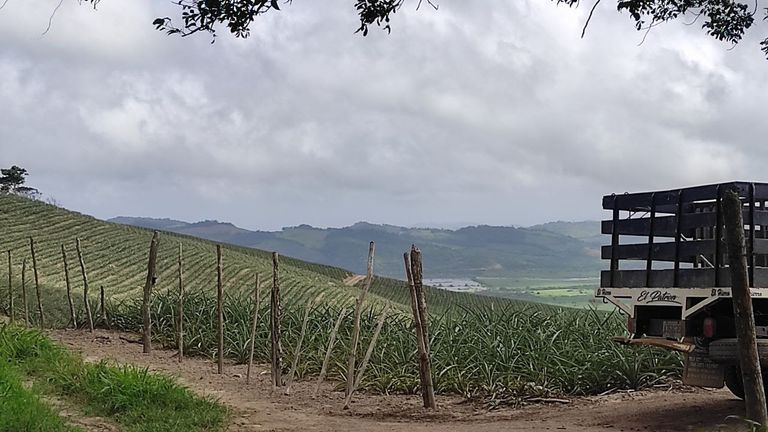
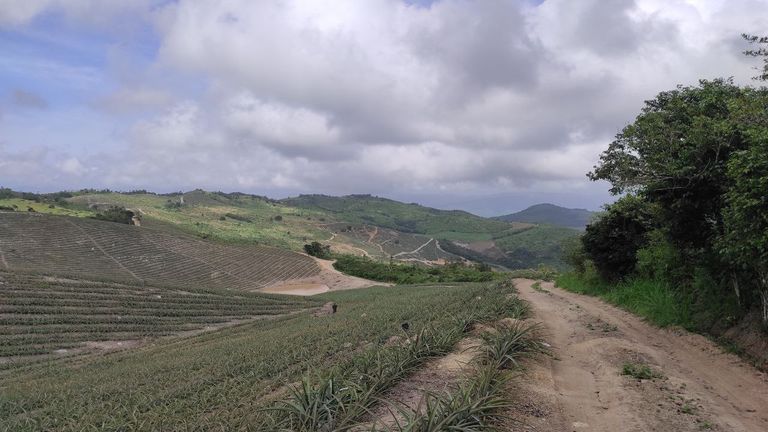


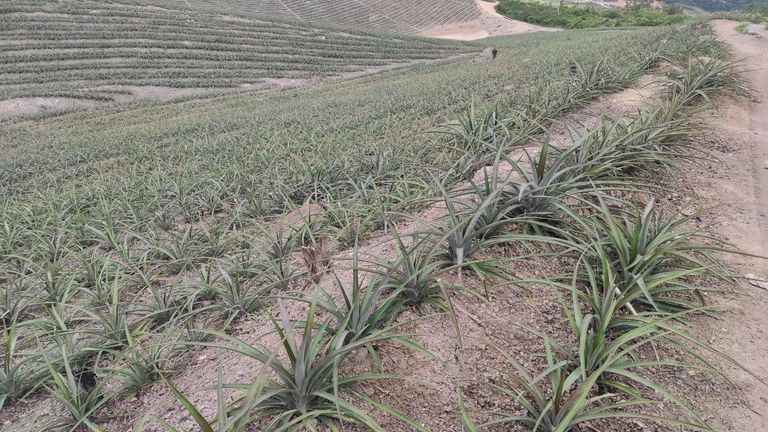
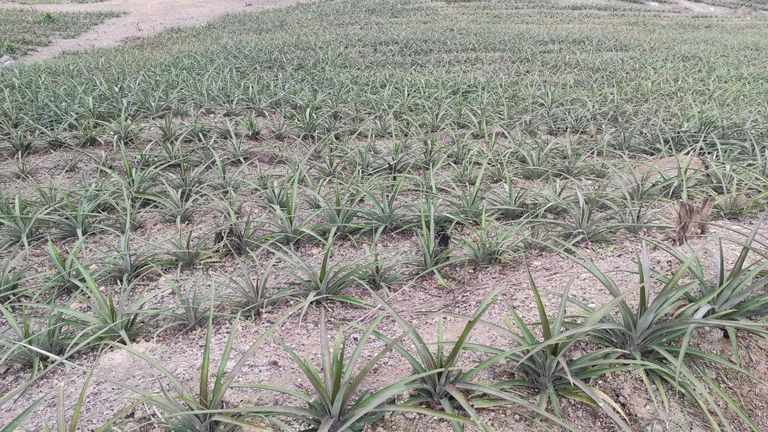
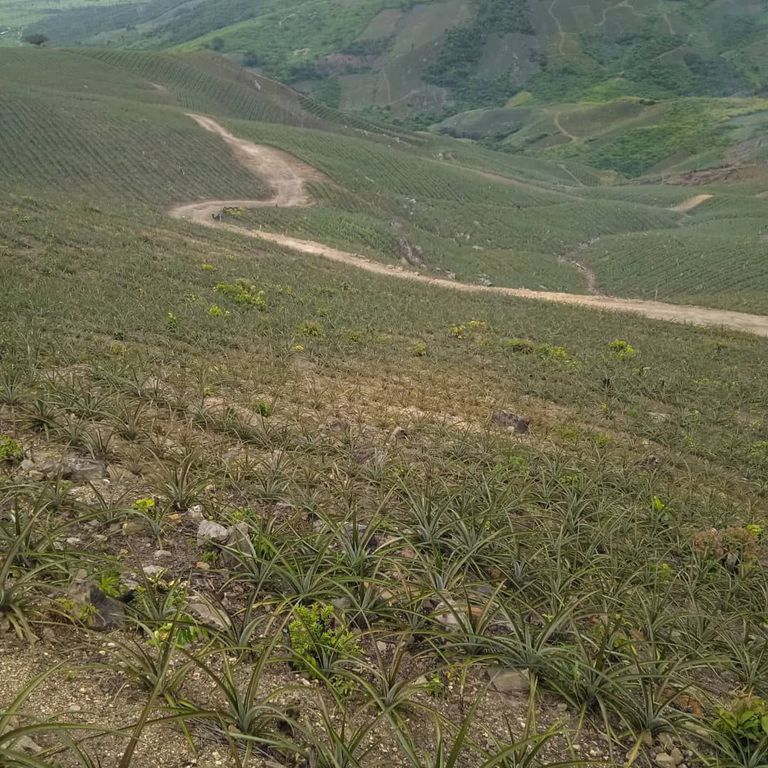
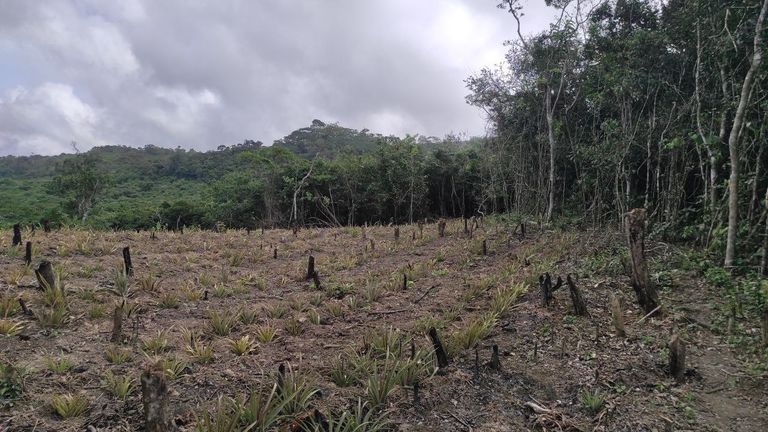
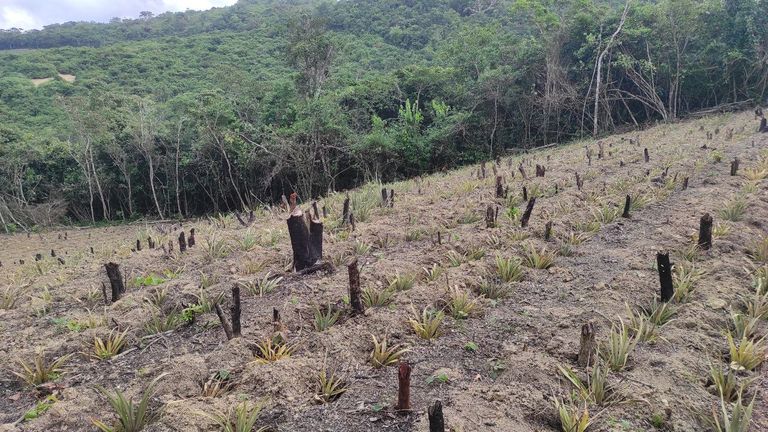
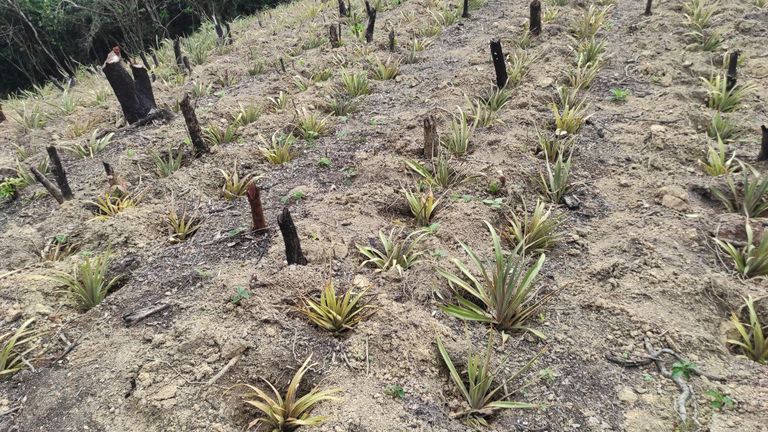


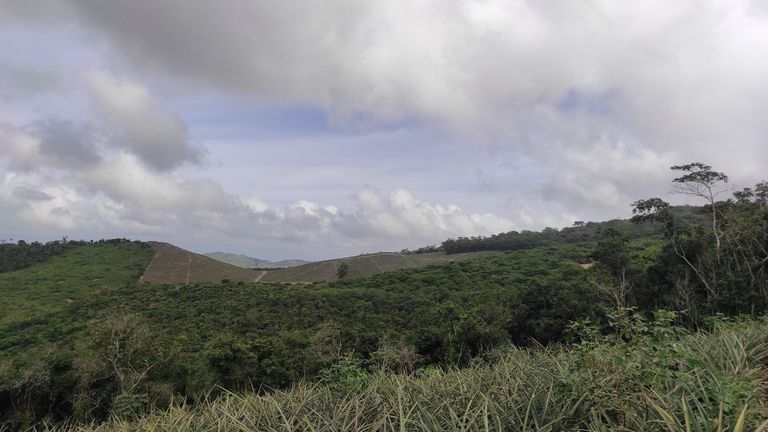
Y bueno finalmente luego de ir a lo mas profundo de la montaña regresamos, el viaje fue un poco largo quizás de 2 o 3 horas, y un poco entretenido. Lamento no haber podido tomar fotografías de los animales que pude ver y hubiese querido ver un poco mas.
Regresamos por la ruta mas larga, y reconozco que me pareció interesante ver el cultivo de piñas, aunque no mucho como es la manera en que la cultivan comercialmente.
La finca donde pasamos y donde tome la primera foto del post se llama "Las chinas", era una finca privada anteriormente.
Además de este paisaje, tengo otros dentro del mismo parque que luego compartiré con ustedes.
Nos vemos en la próxima.
Todas las fotografías fueron tomadas por mi con mi dispositivo Xiaomi Redmi Note 9 pro.
Los gifs fueron hechos con la aplicacion gifshop
And finally after going deep into the mountain we returned, the trip was a little long, maybe 2 or 3 hours, and a little entertaining. I regret not having been able to take pictures of the animals that I could see and I would have liked to see a little more.
We returned by the longer route, and I admit that I found it interesting to see the cultivation of pineapples, although not much as it is the way they grow it commercially.
The farm where we passed and where I took the first picture of the post is called "Las Chinas", it was a private farm before.
In addition to this landscape, I have others within the same park that I will share with you later.
See you next time.
All photos were taken by me with my Xiaomi Redmi Note 9 pro device.
The gifs were made with the gifshop application.
